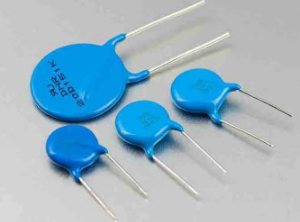-
Location:
- Home
- > news center > industry information

In electronic circuits, capacitors are used to block direct current through alternating current, and are also used to store and release charge to act as a filter to smooth the output pulse signal. Small-capacity capacitors are usually used in high-frequency circuits, such as radios, transmitters and oscillators. Large-capacity capacitors are often used for filtering and storing charges. And there is another feature. Generally, capacitors above 1μF are electrolytic capacitors, while capacitors below 1μF are mostly ceramic capacitors. Of course, there are others, such as monolithic capacitors, polyester capacitors, and small-capacity mica capacitors. Electrolytic capacitors have an aluminum shell filled with electrolyte and lead out two electrodes as positive () and negative (-) poles. Unlike other capacitors, their polarity in the circuit cannot be wrongly connected, while other capacitors do not. polarity.
Connect the two electrodes of the capacitor to the positive and negative poles of the power supply. After a while, even if the power supply is disconnected, there will still be residual voltage between the two pins (after learning a later tutorial, you can use a multimeter to observe), we say capacitors Stored charge. A voltage is built up between the plates of the capacitor to accumulate electrical energy. This process is called the charging of the capacitor. There is a certain voltage across the charged capacitor. The process of releasing the charge stored in the capacitor to the circuit is called the discharge of the capacitor.
To give an example in real life, we see that after unplugging a commercially available rectifier power supply, the LED on it will continue to light up for a while, and then gradually turn off, because the capacitor inside has stored electrical energy in advance and then released it. Of course, this capacitor was originally used for filtering. As for capacitor filtering, I wonder if you have any experience of listening to Walkmans with rectified power supplies. Generally, low-quality power supplies use smaller-capacity filter capacitors for cost-saving reasons, causing hum in the headphones. At this time, a larger-capacity electrolytic capacitor (1000μF, pay attention to the positive pole connected to the positive pole) can be connected to both ends of the power supply, which can generally improve the effect. Audiophiles must use capacitors of at least 10,000 microfarads to filter the HiFi audio. The larger the filter capacitor, the closer the output voltage waveform to DC, and the energy storage function of the large capacitor makes the circuit when a sudden large signal arrives. There is enough energy to convert into a powerful audio output. At this time, the role of the large capacitor is a bit like a reservoir, making the original turbulent water flow smoothly output, and can ensure the supply of large amounts of water downstream.
Capacitors are similar to resistors, usually referred to as capacitors for short, and are represented by the letter C. Various capacitors are used in electronic production, and they play different roles in the circuit. A capacitor is a "container for storing electric charge." Although there are many types of capacitors, their basic structure and principles are the same. Two pieces of metal that are very close together are separated by a substance (solid, gas or liquid) to form a capacitor. The two pieces of metal are called plates, and the substance in the middle is called the medium. Capacitors are also divided into fixed capacity and variable capacity. But the common ones are fixed-capacity capacitors, the most common ones are electrolytic capacitors and ceramic capacitors.
Different capacitors have different capacities for storing charge. It is stipulated that the amount of charge stored when a capacitor is applied with a DC voltage of 1 volt is called the capacitance of the capacitor. The basic unit of capacitance is farad (F). But in fact, farad is a very rarely used unit, because the capacity of capacitors is often much smaller than 1 farad, commonly used microfarad (μF), nanofarad (nF), picofarad (pF) (picofarad is also called picofarad) ) And so on, their relationship is: 1 farad (F) = 1000000 microfarads (μF) 1 microfarad (μF) = 1000 nanofarads (nF) = 1000000 picofarads (pF)
In electronic circuits, current flows only during the charging process of the capacitor. After the charging process is over, the capacitor cannot pass direct current, and it acts as a "DC blocking" in the circuit. In the circuit, capacitors are often used for coupling, bypassing, filtering, etc., all of which take advantage of its characteristics of "passing AC and blocking DC". So why can alternating current pass through the capacitor? Let's first look at the characteristics of alternating current. Alternating current not only changes its direction back and forth, but its magnitude also changes regularly. The capacitor is connected to the AC power supply, and the capacitor is continuously charged and discharged, and the charging current and the discharging current that are consistent with the changing law of the alternating current will flow in the circuit.
The selection of capacitors involves many problems. The first is the issue of withstand voltage. When the voltage applied to the two ends of a capacitor exceeds its rated voltage, the capacitor will be damaged by breakdown. Generally, the withstand voltage of electrolytic capacitors is divided into 6.3V, 10V, 16V, 25V, 50V, etc.